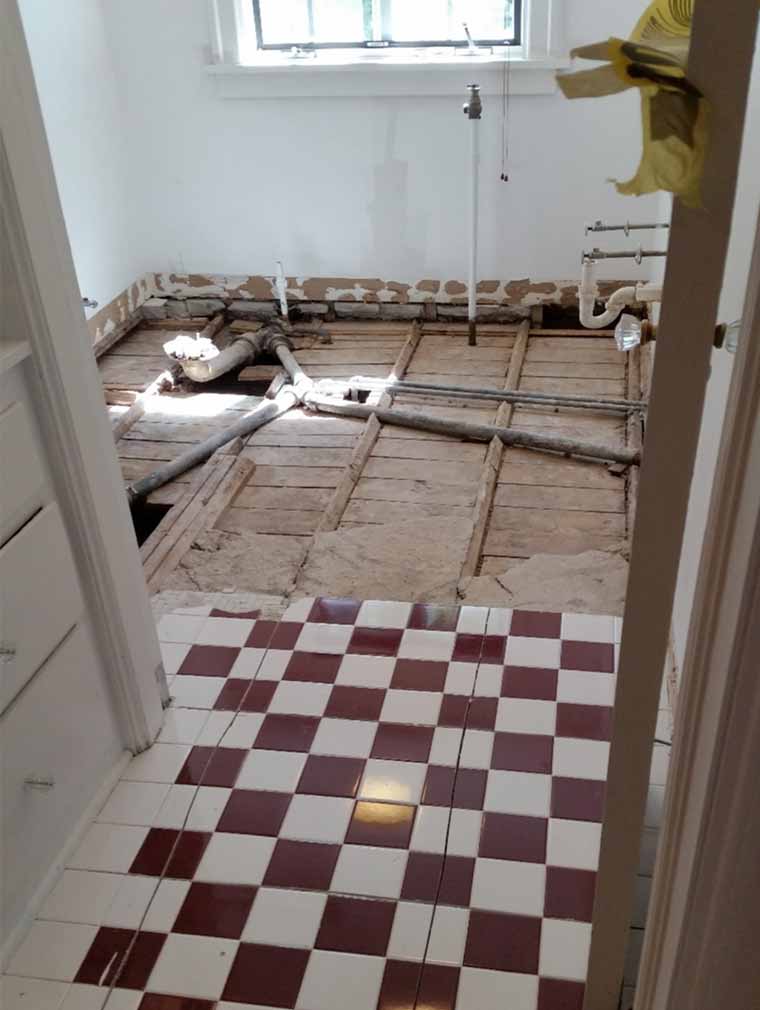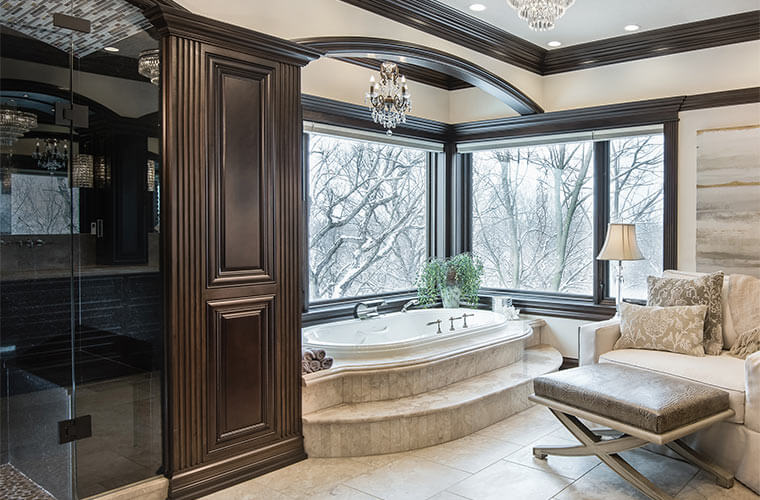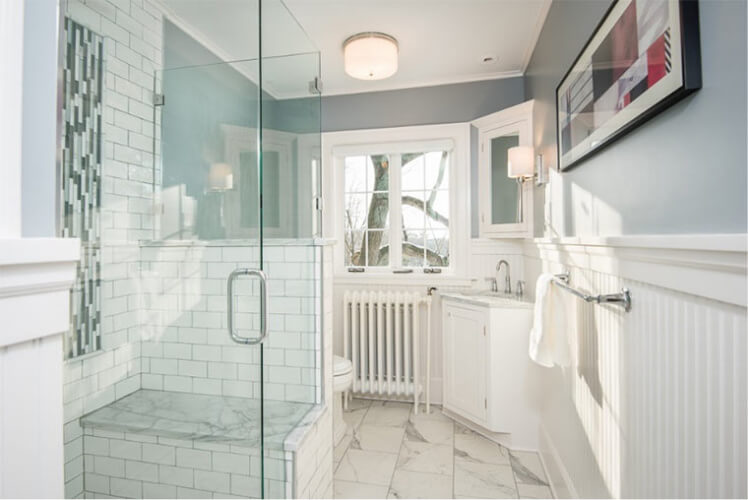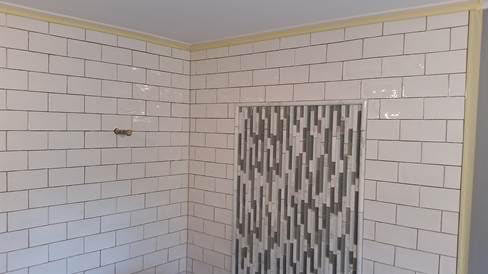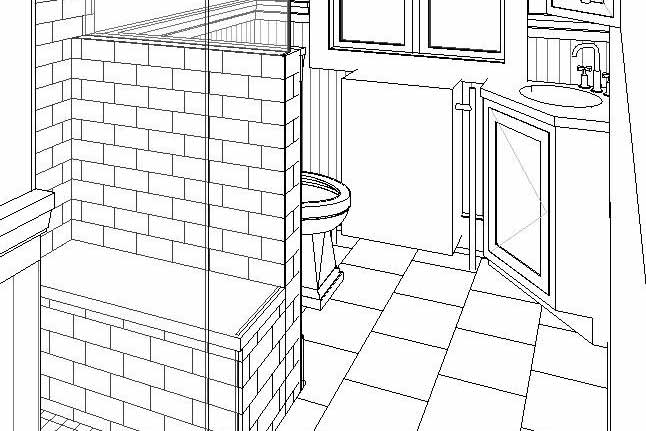Get the full story with Part 1 and Part 3 of this blog post.
It’s nearly inevitable in a remodeling project that you will run into something that you did not expect, or you will decide to change something once construction starts. We call this the “unforeseen condition”.
It may be something like old plumbing or electrical work behind the walls, as we ran into on this project. Or, once some walls come down and finishes are removed, the room opens up and you might see different possibilities. This is why we always recommend that you plan a contingency fund – in the event that changes to the original plan arise.
What’s Behind the Walls
In the case of this remodeled hall bathroom, we found old knob-and-tube wiring* hidden behind the walls in two bathrooms that we had to properly terminate to meet current building code requirements. This was a relatively uncomplicated fix, but we also found plumbing modifications from a previous remodeling project that did not meet the current building code. Addressing the plumbing was a bigger can of worms so we called the plumber and plumbing inspector, scheduled a meeting at the house and discussed how far we would have to take the changes in order to get an inspector’s approval. This ensured that we modified the plumbing in a way that would pass the plumbing inspector’s review. This is a much better strategy than taking the chance of having to redo the plumbing work.
Having the inspector come in first also allowed us to understand upfront the scope of work to complete, so we could provide our client with a quote for the additional work before starting the modifications.
The client benefits greatly from this type of preemptive approach to these unforeseen conditions. With a planned project budget and contingency fund in place, the client has the numbers in front of them so they can make decisions on which updates to tackle immediately and which to wait on until a later date. And they can understand how that contingency fund is affected.
Of course, we don’t encounter “unforeseen conditions” in every one of our projects. But in the process of uncovering floors and walls, for example, we often do run across additional issues that need some sort of attention. Or, sometimes, the client makes the decision to change the project’s scope. With a clear plan in place before you get started, this doesn’t have to be a terrifying event. Just make sure you include in your budget a contingency fund, and always ask for quotes for any changes before the work is started. That way any hidden surprises will be less surprising!
* “Knob-and-tube wiring” is an early method of electrical wiring in buildings, commonly used in North America from about 1880 to the 1930s.
See other completed Silent Rivers bathroom remodels by visiting our Project Gallery and look for project updates posted to our Facebook page.
